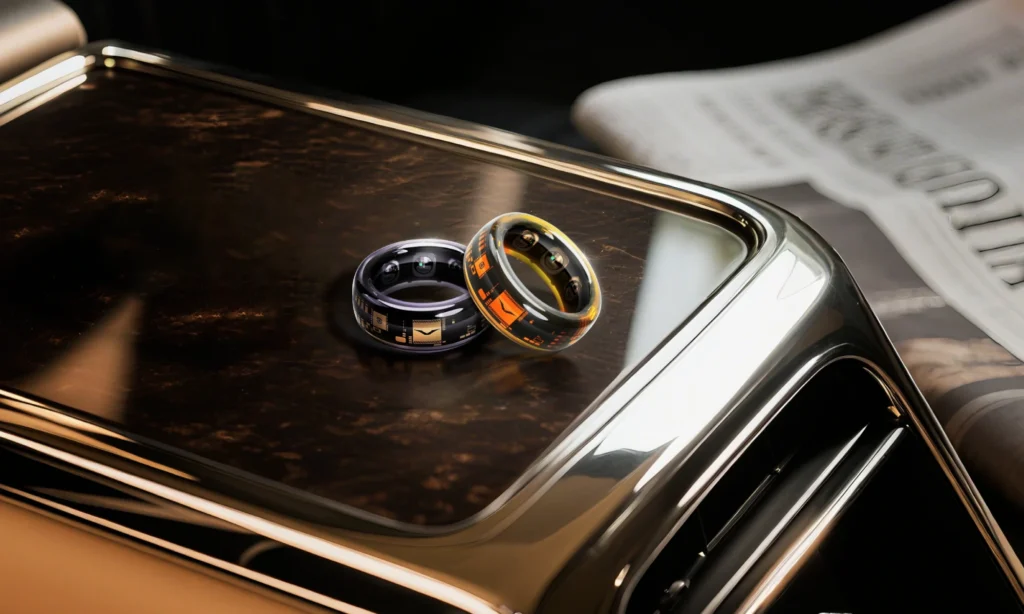The buzz around smart rings is undeniable. These discreet wearables promise a seamless way to track our health and stay connected. But as we move further into 2025, it's crucial to look beyond the hype and consider the potential downsides. While smart rings offer a unique blend of style and technology, they come with a set of disadvantages and hidden costs that prospective buyers should be aware of. This comprehensive guide will explore the drawbacks of smart rings, providing you with the insights needed to make an informed decision.
What Are the Financial Downsides of Owning a Smart Ring?
One of the most significant, yet often overlooked, aspects of smart ring ownership is the potential for ongoing costs. While the initial purchase price is a clear expense, many popular smart rings require a monthly subscription to access the full suite of their features.
The Oura Ring, a leader in the smart ring market, is a prime example. While the hardware itself comes with a premium price tag, unlocking detailed health insights, long-term trend analysis, and personalized recommendations requires a monthly subscription of around $5.99.[1][2][3] Without this subscription, the ring's functionality is significantly reduced, essentially turning it into a basic sleep and activity tracker. Over time, these recurring fees can add up, substantially increasing the total cost of ownership.
However, not all smart ring manufacturers have adopted this model. Brands like RingConn and Amazfit have positioned themselves as subscription-free alternatives, offering access to all their features for the initial purchase price of the device. The Samsung Galaxy Ring, another major player, also does not require a subscription, though its full functionality is best realized when paired with a Samsung phone. This creates a crucial decision point for consumers: pay a higher upfront cost for a subscription-free ring or a lower initial price with the caveat of ongoing monthly payments.
What Are the Daily User Experience Limitations?
Living with a smart ring day-to-day can present some practical challenges that aren't immediately apparent. A primary limitation is the complete lack of a screen. This design choice contributes to their discreet and stylish appearance, but it also means that all your data is accessible only through a companion smartphone app.
For those who want real-time feedback during a workout, like checking their heart rate or pace, this can be cumbersome. You'll need to have your phone with you and open the app to see your metrics, which is less convenient than a quick glance at a smartwatch. Furthermore, smart rings do not offer notifications for calls, texts, or other alerts, a standard feature on most other wearables.
Durability is another concern. While designed for 24/7 wear, the constant exposure to daily activities can lead to scratches and scuffs, particularly on matte finishes.[1] Their small size also makes them more susceptible to being lost or damaged.
How Private and Secure is Your Smart Ring Data?
Smart rings collect a vast amount of sensitive personal health data, including sleep patterns, heart rate, body temperature, and activity levels. This raises significant privacy and security concerns. The security of the companion app and the cloud backend where this data is stored is paramount.
Recent studies have highlighted potential vulnerabilities in the smart ring ecosystem, including the possibility of sensitive data being transmitted without encryption. While leading manufacturers are taking steps to address these concerns with features like end-to-end encryption and transparent data policies, the risk of data breaches remains. Users must trust that their personal health information is being handled responsibly and protected from unauthorized access. The history of privacy controversies with other connected devices, like Ring cameras, serves as a reminder of the potential risks involved.
What Are the Technical and Performance Limitations?
From a technical standpoint, smart rings have some inherent limitations compared to their larger wearable counterparts. Battery life, while often lasting for several days on a single charge, is constrained by the small form factor. Features like continuous heart rate monitoring and sleep apnea detection can significantly reduce battery longevity.
While smart rings excel at sleep and recovery tracking, their activity tracking capabilities can be limited, especially for specific types of workouts. They may not accurately track activities like weightlifting and can sometimes misinterpret movements, such as counting a subway ride as steps. For serious athletes or fitness enthusiasts who require detailed workout metrics, a dedicated sports watch may be a more suitable option.
Furthermore, the accuracy of the data collected by smart rings is still a point of consideration. While generally reliable for tracking trends, there can be inconsistencies, particularly with metrics like SpO2 (blood oxygen) levels.
Smart Ring Comparison: Subscription vs. Subscription-Free
| Feature | Oura Ring 4 | Samsung Galaxy Ring | RingConn Gen 2 | Amazfit Helio Ring |
| Initial Price | From $349 | Around $399 | Around $299 | Around $199 |
| Subscription Fee | $5.99/month | None | None | None |
| Key Features | Detailed sleep & readiness scores, women's health tracking | AI-backed sleep insights, Android-only | Sleep apnea screening, long battery life | Budget-friendly, basic health tracking |
| Compatibility | Android & iOS | Android only | Android & iOS | Android & iOS |
Frequently Asked Questions (FAQ)
1. Can I use a smart ring without a smartphone?
No, a smartphone is essential for setting up the ring, viewing your data, and accessing the full range of features. Smart rings are designed to work in conjunction with their companion apps.
2. Are smart rings accurate for tracking workouts?
While smart rings can track basic activity and steps, they are generally less accurate and detailed for specific workouts compared to smartwatches. They often lack GPS and may not be ideal for serious athletes.
3. Is my health data safe with a smart ring?
Leading smart ring companies are implementing security measures like encryption to protect user data. However, as with any connected device, there is an inherent risk of data breaches, and users should be mindful of the privacy policies of the manufacturer.
Who Should Think Twice Before Buying a Smart Ring?
-
Serious Athletes: Individuals who require detailed, real-time metrics for specific sports may find the activity tracking capabilities of smart rings to be insufficient.
-
Budget-Conscious Individuals: Those who are wary of recurring monthly fees should carefully consider subscription-free options or factor the ongoing cost into their budget.
-
Users Seeking a Standalone Device: People who want a wearable that can function independently of a smartphone for notifications and quick data checks will be better served by a smartwatch.
-
Privacy-Conscious Individuals: Those with significant concerns about the collection and security of their personal health data should thoroughly research a brand's privacy policies and security track record before purchasing.
Featured Products
-
Oura Ring 4: A market leader known for its in-depth sleep and recovery analysis, but requires a monthly subscription.
-
Samsung Galaxy Ring: A strong contender with a focus on AI-powered sleep insights and no subscription fee, but is limited to Android users.
-
RingConn Gen 2: A popular subscription-free alternative that offers long battery life and sleep apnea detection.
-
Ultrahuman Ring Air: A comfortable and stylish option with a focus on detailed health metrics and a subscription-free model.
-
Amazfit Helio Ring: A budget-friendly choice that provides basic health and fitness tracking without a recurring cost.







